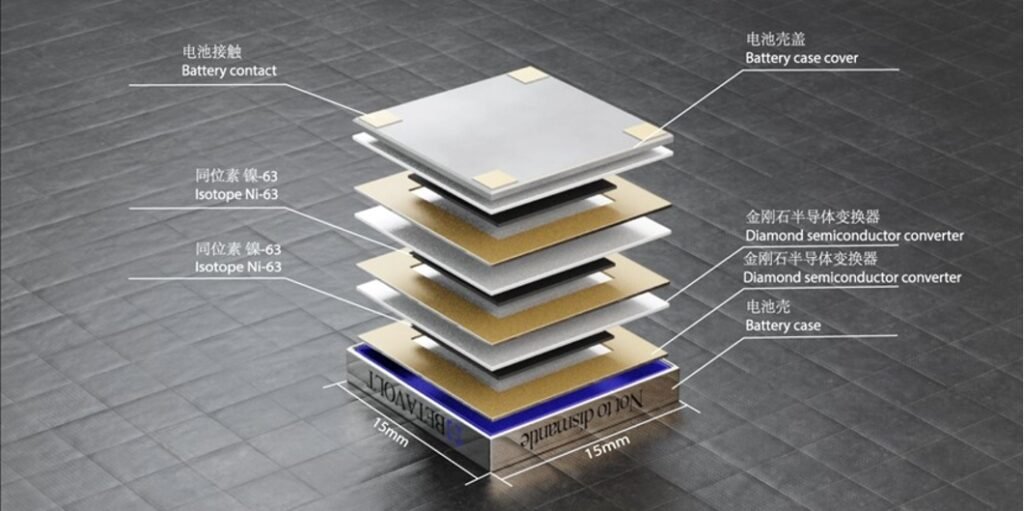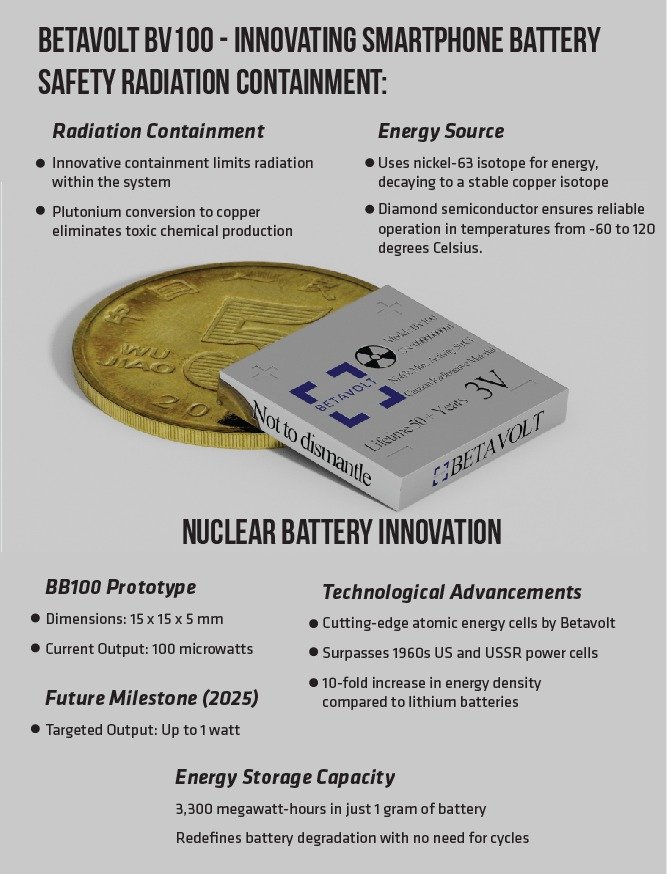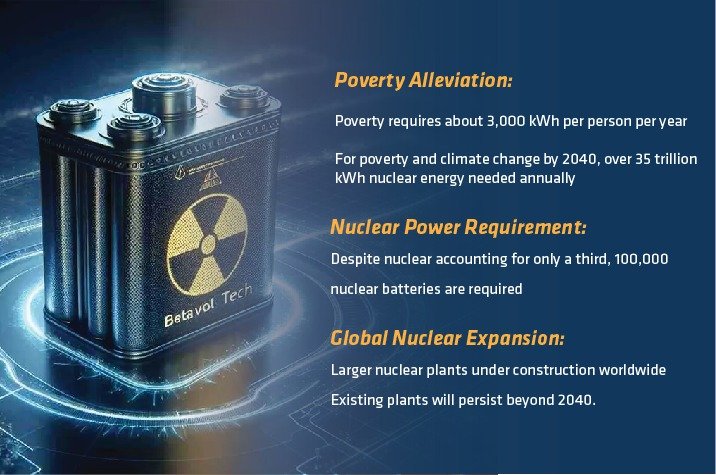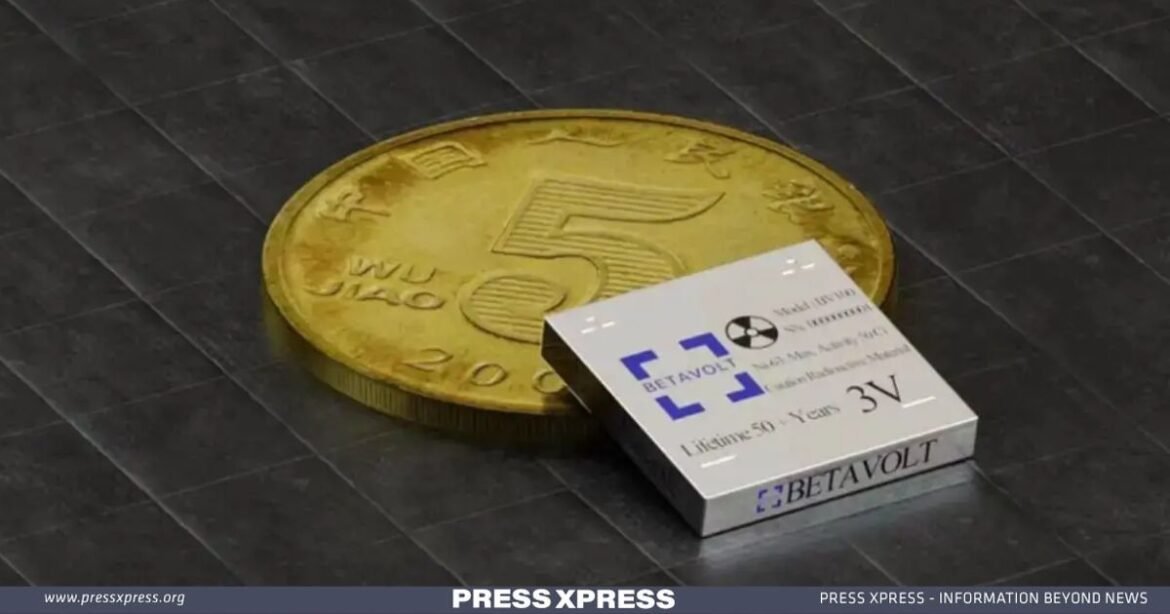Key highlights:
- Betavolt Technology in China is developing nuclear batteries for smartphones with a 50-year charge lifespan
- The radionuclide battery employs a decaying nickel isotope for energy and features an artificial diamond layer as a semiconductor
- The nuclear battery ensures no toxic chemicals are produced, and no radiation escapes, as per the company
In a world where the relentless pace of life often leaves us scrambling for charging outlets, envision a future where the anxiety of a dying phone battery is but a distant memory. Imagine a life where you can wake up, rush to work, and attend events without the perpetual fear of your smartphone succumbing to the dreaded low battery notification?
Emerging on the technological horizon is a groundbreaking innovation from a company based in China — Betavolt Technology. It’s on the brink of revolutionizing the very essence of our daily routines by creating a radionuclide battery with an astonishing lifespan of 50 years. Yes, you read that right.
You can also read: Microsoft Overtakes Apple as World’s Most Valuable Company
While smartphone chipsets continue to advance in power, battery technology has seen little progress over the past few decades. Drawing inspiration from applications in pacemakers and space exploration, the technology incorporates a radionuclide battery featuring a 4th gen artificial diamond layer as a semiconductor, harnessing energy from the decay of the nickel isotope (nickel-63).
The team created a thin, 10-micron single-crystal diamond semiconductor, incorporating a nickel-63 sheet measuring 2 microns in thickness between two diamond semiconductor converters. This innovation finds relevance in space exploration, particularly for powering components located at a distance from the sun.
Thanks to its modular structure, numerous atomic batteries can be linked together to deliver increased energy output, capable of supporting applications such as automotive technology and AI systems, among others.

BV100 Battery: The Fort Knox of Smartphone Safety
Introducing hazardous materials like plutonium into smartphones raised safety concerns, prompting Betavolt Technology to adopt an innovative approach in its current development.
A notable feature of this technology is its capability to contain radiation entirely within the system, coupled with the conversion of nickel isotope to copper, eliminating the production of toxic chemicals. The BV100 ensures consumer safety, asserting its resistance to radiation leakage even when subjected to gunfire or puncture.
The heightened safety standards of the battery result from the careful selection of materials. Utilizing a nickel-63 isotope as the energy source, the battery undergoes decay to a stable copper isotope. Coupled with the diamond semiconductor material, this technology enables the BV100 to operate reliably in temperatures ranging from -60 to 120 degrees Celsius, according to the company.
It confidently asserts that their battery technology surpasses that of European and American academic and commercial institutions. Betavolt goes a step further by claiming that the BV100 is not prone to catching fire or exploding, even when subjected to punctures or gunfire. This distinguishes it from some existing batteries that pose safety risks when damaged or exposed to elevated temperatures.

Compact, Efficient, and Affordable
Earlier attempts to develop nuclear batteries faced setbacks due to their unwieldy size or inadequate power output for smartphones. The commitment to scale down and bring nuclear batteries into the commercial realm forms part of China’s 14th Five-Year Plan, crafted to fortify the nation’s economic framework between 2021 and 2025.
The BV100, a functional model measuring 15 x 15 x 5 mm, currently generates 100 microwatts of electricity, and the company intends to enhance the technology to achieve a power output of up to one watt by 2025. Betavolt distinguishes its atomic battery by highlighting its differences from power cells developed by the US and USSR in the 1960s.
The corporation maintains that its nuclear batteries are cutting-edge atomic energy cells, surpassing contemporary lithium batteries with a tenfold increase in energy density. With the ability to store an astounding 3,300 megawatt-hours in just 1 gram of battery, these nuclear batteries redefine the concept of battery degradation by eliminating the need for battery cycles.
It is also mentioned that the earlier nuclear batteries were sizable, posed risks, emitted heat, and were expensive commodities.

A New Dawn in Nuclear Power
Nuclear batteries demonstrate robustness in challenging conditions and under substantial loads, maintaining consistent power generation. Just as new cars are manufactured, nuclear batteries would be seamlessly produced on automated assembly lines, joining the ranks of thousands industrially mass-produced.
These batteries can be swiftly delivered to urban, rural, or maritime locations, immediately providing electricity, clean water, and other essential services. Nuclear batteries are crucial for addressing the challenges of informal settlements and slums. Currently, over a billion people lack access to basic necessities, and this could double by 2050.
Addressing poverty requires about 3,000 kWh per person per year. With the world generating 24 trillion kWh annually, over 16 trillion from fossil fuels, we need over 35 trillion kWh per year by 2040 to combat poverty and climate change.
Even with nuclear comprising only a third of this, we’d need the equivalent of 100,000 nuclear batteries. Larger nuclear plants are still being built globally, and many existing ones will continue operating in 2040.
Moreover, Small Modular Nuclear Reactors (SMRs) of various designs will be built, with thousands expected to be online by 2040. The flexibility of SMRs and nuclear batteries will be vital for deploying power where it’s needed most.
In conclusion, step into a vision of tomorrow, where nuclear power fuels not just technological progress, but a sweeping global transformation towards a brighter, more sustainable future. The BV100 Battery is not merely a technological marvel; it symbolizes the remarkable capacity of human ingenuity, and innovation to carve out a more luminous, sustainable destiny for humanity.


